
By Dr. Andrew Thurber, Assistant Professor, Oregon State University
September 27, 2020
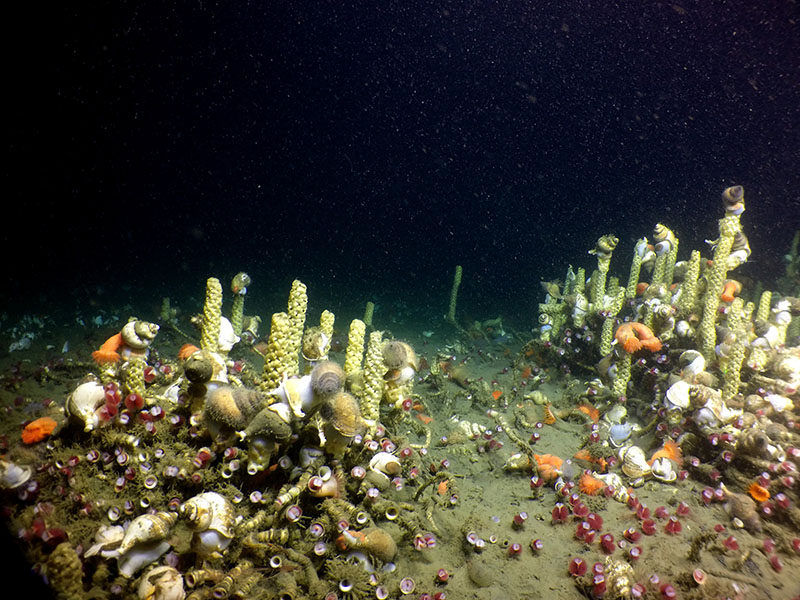
Seeps are home to many animals, increasing biodiversity in the deep by creating food from chemical energy and structure for deep-sea animals to lay their eggs on. For example, this image shows a mass of snails (gastropods called Neptunea) and their egg masses (the yellow towers) using clumps of tubeworms as a place to anchor them in the otherwise soft sediment of the deep. Image courtesy of Ocean Exploration Trust - Cruise NA095. Download larger version (jpg, 3.7 MB).
The ocean has been an economic resource and critical component of society throughout human history, and yet it is also an area that faces increased use and economic growth. The decision to use a resource involves a combination of technology, economics, and societal will. Seeps are no different, and exploration and discovery of them will inform management decisions as we decide the future economy of the deep ocean.
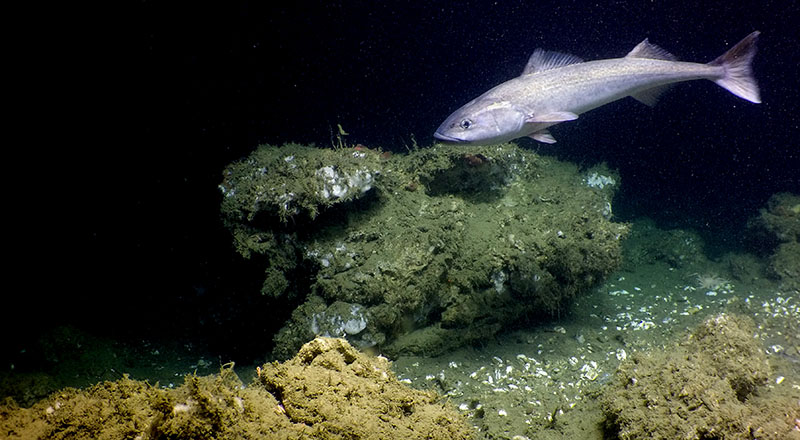
A black cod (also known as sablefish) swims above a seep clam bed off the Oregon coast. Image courtesy of Ocean Exploration Trust - Cruise NA095. Download larger version (jpg, 2.8 MB).
Fisheries have been active in the deep sea for decades, providing food for our tables. Mounting evidence supports that seeps provide habitat and even food to commercially harvested species. Fish (including sablefish, flatfish, and rockfish) are routinely harvested within the range of “the deep sea” (depths greater than 200 meters/600 feet). Off of Oregon and Washington, the location of this exploration cruise, deep-sea fishing is a multimillion-dollar industry that provides food, jobs, and livelihoods to communities up and down the coast.
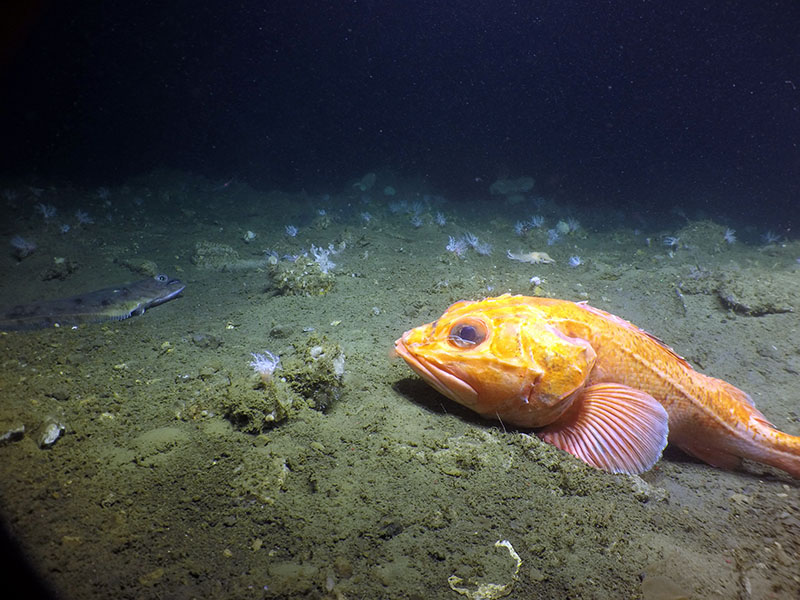
Thornyhead rockfish and flatfish are often found at seeps, both of which are actively fished both for local consumption and export. Thornyhead rockfish have been shown to be more abundant around seeps than away from them. Image courtesy of Ocean Exploration Trust - Cruise NA095. Download larger version (jpg, 4.6 MB).
Evidence from around the globe suggests that certain harvested fish occur in higher densities at methane seeps, including thornyhead rockfish on the West Coast of the United States and Chilean seabass (Patagonian toothfish) in the South Pacific. Deep-sea snow crabs also feed at methane seeps. Exploring the relationship between fisheries and seeps will help inform the conservation of ocean resources while keeping our fisheries and coastal communities vibrant.
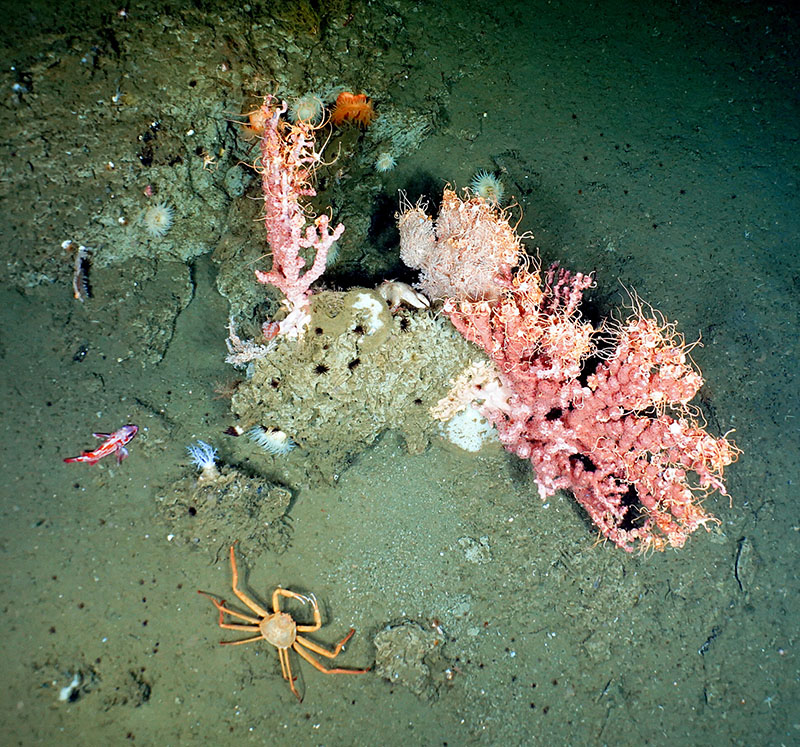
Tanner crabs, like this one next to a deep-sea coral, are one of two species sold as snow crabs and have been shown to occasionally get energy from methane seeps. Image courtesy of Oregon State University, Ocean Exploration Trust, NOAA OCNMS, and NOAA Office of Ocean Exploration and Research. Download larger version (jpg, 2.7 MB).
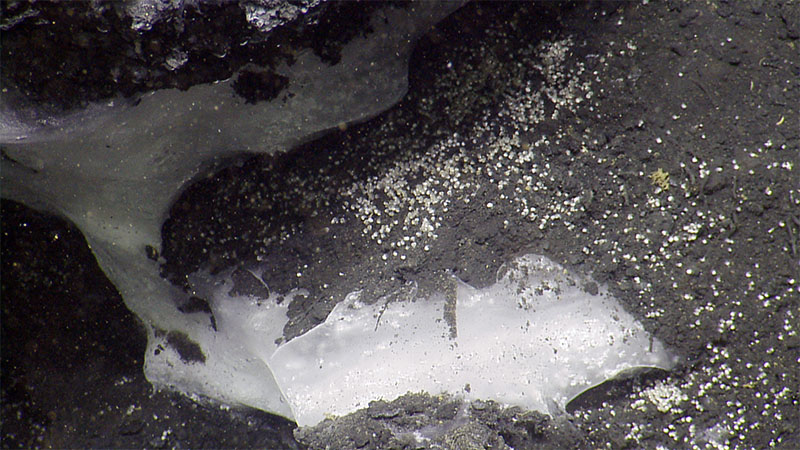
Methane hydrate is methane trapped in a cage of water that occurs at certain pressures and depths. Where it leaks out, seeps form. Image courtesy of Ocean Exploration Trust. Download larger version (jpg, 1.9 MB).
Deep-sea mining is an emerging ocean use and at seeps, the most likely target for mining is methane hydrate. The future of energy is a pressing concern, due to limited oil reserves and the climate impact of burning fossil fuels. There are gigatons of methane in the deep sea, and though the technology to harness it is currently limited, the technology is rapidly developing. The potential use of methane hydrates is not a one-dimensional prospect; for example, it could provide energy independence to certain countries. However, mining can negatively impact biodiversity and fish habitats, as seep habitats rely on methane-derived energy to sustain the local ecosystem. In addition, methane leaks could increase as a result of hydrate mining, reducing oxygen in fishery areas. Most importantly, burning methane for energy releases carbon dioxide into the atmosphere, so this usage could add to the warming of our planet. This potential avenue of seep usage requires public input and conscientious informed management.
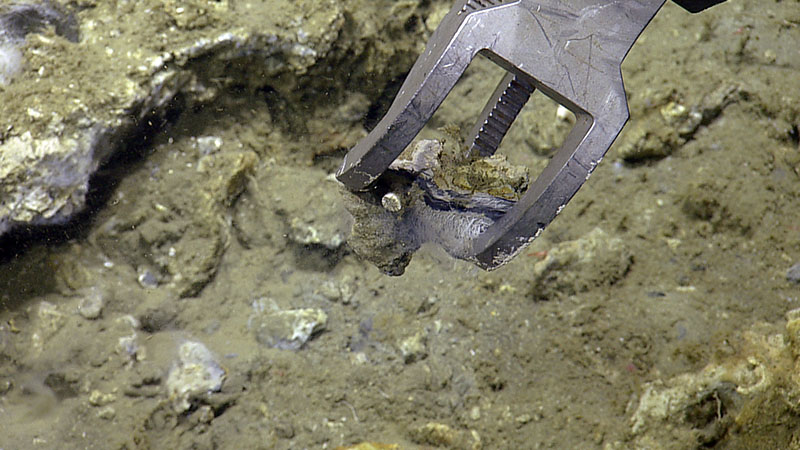
There are many habitats that together form seeps, from soft sediment to carbonate rocks. In this image, you can see a mat of bacteria growing on the underside of a ledge. Through analyzing the composition of this rock, we can better understand the potential future uses of seep ecosystems. Image courtesy of Oregon State University, Ocean Exploration Trust, NOAA OCNMS, and NOAA Office of Ocean Exploration and Research. Download larger version (jpg, 1.6 MB).
The mining of rare earth elements (REEs) is another potential use of the deep ocean. REEs are critical in many emerging and high-technology devices, from cell phones to electric cars. These compounds can be mined on land, but only in a limited number of areas. Recently REEs have been discovered in deep-sea sediment in potentially economically viable concentrations.
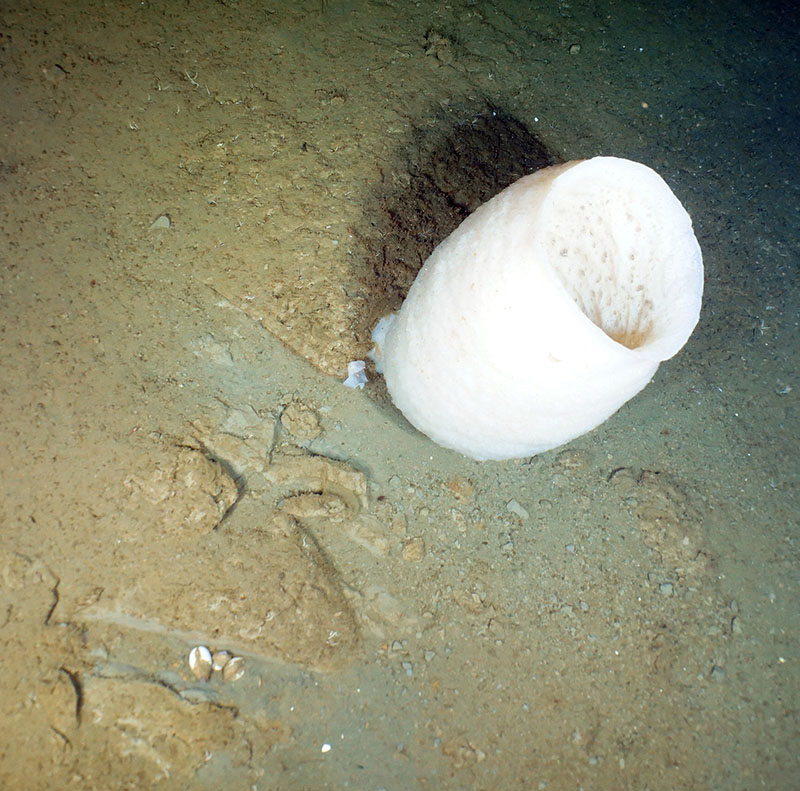
Sponges and sediment are both areas where there is the potential for exciting discovery of previously unknown compounds that may help society. Here is an image of a deep-sea glass sponge next to a small pocket of what appear to be seep clams. Further pointing to the widespread nature of seeps, this was just a pocket of three clams in an otherwise veritable forest of sponges and corals, with no other obvious signs of seepage nearby. Image courtesy of Oregon State University, Ocean Exploration Trust, NOAA OCNMS, and NOAA Office of Ocean Exploration and Research. Download larger version (jpg, 1.6 MB).
Excitingly, the deep sea is a potential source of novel biopharmaceutical and biotechnological compounds. Nature can provide a mind-boggling diversity of chemical structures, and many of these could be applied to current and future societal problems. Seeps in particular are areas of incredible biodiversity leading to chemical diversity, making them ripe for the discovery of new compounds.

Seep ecosystems are multifaceted, with biodiversity in the sediment supporting an amazing array of animals and a multitude of potential uses, including those that we get from its inspiration. Image courtesy of Ocean Exploration Trust. Download larger version (jpg, 3.6 MB).
Seep ecosystems must be considered within the future Blue Ocean economy. As a society, we gain more than material benefits from these ecosystem; we gain inspiration, education, and a functioning planet. The ocean is vast but actively used, and some potential uses are mutually exclusive. For example, fishing and methane mining cannot likely co-occur in one area. These issues must be carefully pondered. To inform our decisions, we must continue to explore the ocean so we, as a people, can determine its future.